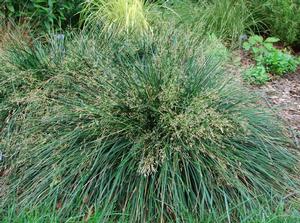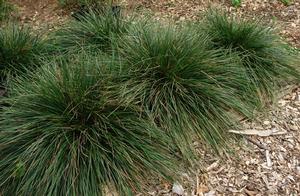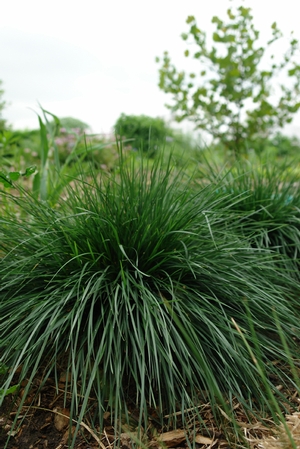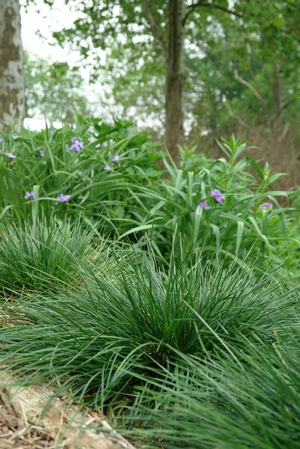Deschampsia cespitosa 'Goldtau'
Common: tufted hairgrassDeschampsia cespitosa 'Goldtau' LP32 - 32 per flat
- Height: 12"-24"
- Spread: 24"-30"
- Spacing: 12"
- Hardiness Zone(s): 4-9


Deschampsia cespitosa 'Goldtau' LP32 - 32 per flat



Selected for deep, dark-green foliage, late blooming period, clump-forming habit and airy, golden-yellow flowers that emerge in June and last through to September. Attractive seed heads persist through winter. An eye catching cool season, semi-evergreen ornamental grass perfectly suited for part sun to shade.
Plant in moist but well-drained, humus-rich soil in partial sun or light shade. Prefers acidic conditions. 'Goldtau' can tolerate hot, dry conditions with ample water. Cut back seed stalks in late winter to early spring. To propagate, divide in spring or fall.
A selection of Deschampsia cespitosa, 'Goldtau' is noted for its compact habit, extended bloom period and lovely golden-yellow inflorescences. The foliage grows to 1’ tall and then fills in at 2’ tall when it begins to bloom. Tufted hairgrass is a wonderful grass to hide leggier plants such as Monarda spp. or Phlox paniculata. To take the best advantage of its decorative inflorescences, be sure to site tufted hairgrass where it can be backlit by the setting sun and where gentle air movement can sway its cloudlike flower panicles.
Deschampsia cespitosa is a circumpolar plant, ranging across the northern hemisphere, and adapting to various conditions. Populations occupy moderately moist to seasonally flooded, sunny to partially shaded environments in a wide variety of soil types. The plant can be found in a variety of habitats including seasonally wet prairies, open forests, tidal marshes, and pond and stream margins. In the eastern United States, it can be found in disturbed soggy fields and roadsides. Different populations and subspecies tolerate high soil acidity and heavy metals while some have a moderate tolerance to salinity. The plant prefers cooler climates and floral display may be diminished in hotter climates in the South. The plant should be cut back to the ground in late winter for spring and summer display.
We are utterly impressed with this gem in our trial garden, as the dark green foliage, long bloom period and golden yellow flower stalks command attention. We love using Deschampsia cespitosa as a transitional plant, bridging the gap between a full sun site to a shadier site in the garden in sweeps and masses. Tufted hairgrass is a larval food plant with several butterflies in North America, including umber skippers, and to over 40 Lepidopteran species worldwide. Seeds and leaf blades can be forage for small birds and mammals as well.